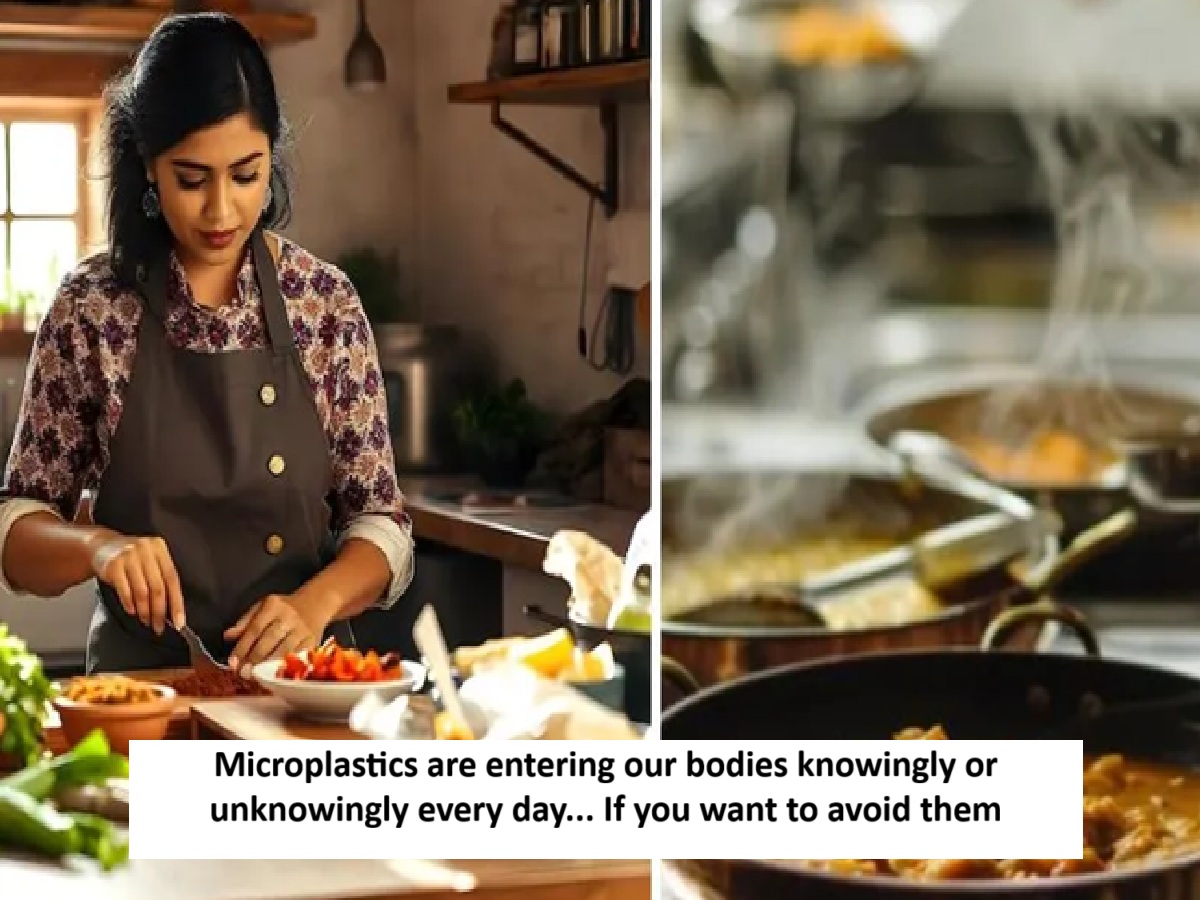
News Topical, Digital Desk : In today's fast-paced lives, we try various methods to stay healthy—organic food, fitness routines, detox drinks, and what not! However, did you know that every day, without even realizing it, many of us are also introducing microplastics into our bodies?
Actually, these are tiny plastic particles that lurk in the air, water, and especially in our kitchen utensils. They gradually reach our body and can cause numerous diseases. In this article, let's explore the 10 kitchen items (Microplastics in Food) that, if discarded today, can significantly reduce your risk of microplastics.
Old and scratched plastic containers
Plastic containers, especially when hot food is stored in them or they are microwaved, release microplastic particles.
- Variation: Use glass or stainless steel containers instead.
plastic chopping boards
When you cut vegetables or meat on a plastic chopping board, small plastic particles get mixed into the food due to the knife.
- Variation: Use a wooden or steel cutting board.
Non-stick utensils
When the Teflon coating (Polytetrafluoroethylene - PTFE) on non-stick cookware is scratched or overheated, it releases toxic chemicals and microplastics.
- Variations: Use cast iron, stainless steel, or good-quality ceramic cookware.
Plastic water bottles and jugs
Reused plastic bottles degrade over time and release microplastic particles into the water.
- Change: Use glass or steel bottles and jugs for drinking and storing water.
plastic wrap
Plastic cling wrap used to wrap food can also release microplastics and other chemicals when it comes into contact with hot or oily food, which then leach into the food.
- Variation: Use butter paper, glass containers, or silicone food covers instead.
Plastic/nylon utensils
Plastic or nylon spoons, spatulas, etc. may melt and release small particles when in contact with hot oil or food.
- Change: Use only wooden, steel or silicone utensils for cooking.
plastic tea bags
Some tea bags are made from nylon or plastic fibers instead of paper. These can release large amounts of microplastics when heated.
- Variations: Use loose leaf tea or use a stainless steel strainer for filtration.
Plastic sponges and scrubbers
These plastic sponges used for washing dishes release tiny plastic fibers when scrubbed, which can be released through water into the environment and eventually into your food cycle.
- Variation: Use natural scrubbers made from jute or coconut fiber or plant-based sponges to wash dishes.
Disposable plastic plates and glasses
Single-use plastic utensils used at parties or picnics release microplastics, especially when in contact with hot food.
- Modification: Use reusable utensils or disposable options made from leaves/paper.
Eating directly from the take-out container
Avoid eating hot food brought from outside directly from the plastic container, as the heat can cause plastic particles to leach into the food faster.
- Modification: Transfer the food immediately to household utensils and then eat.
It's not possible to completely avoid microplastics, but by making these small changes, you can significantly reduce the amount of plastic entering your body.
--Advertisement--

 Share
Share



